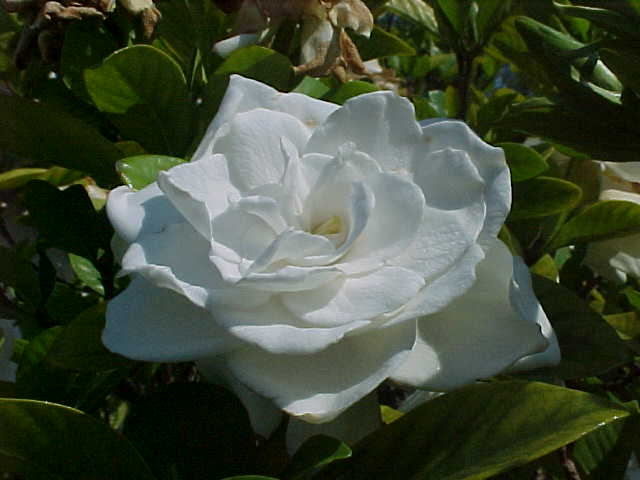最新文章
归档
最新评论

正文
Bought two Gerdenia Veitchii today (12/11/07)
Gardenia jasminoides

Gardenia jasminoides

| Aristocratic hedge or corner foundation plant. Unbeatable as a flowering container plant. Can be grown quite successfully indoors if given as much light as possible. Do not let the soil become dry -- the plant will respond by dropping leaves and buds. Variety "Veitchii" is particularly suited to the indoors, as it is more compact, and has smaller leaves. All gardenias require moist, acid soil and should be planted high as you would an azalea or rhododendon. Plants benefit from a good layer of mulch. Whiteflies may be a problem. |
| Important Info : If plant becomes yellow or chlorotic, treat with iron sulfate or iron chelate. |
How to Grow this Plant:
Characteristics
| Cultivar: | Veitchii |
| Family: | Rubiaceae |
| Size: | Height: 6 ft. to 40 ft. Width: 3 ft. to 10 ft. |
| Plant Category: | shrubs, trees, |
| Plant Characteristics: | low maintenance, |
| Foliage Characteristics: | evergreen, |
| Foliage Color: | dark green, green, |
| Flower Characteristics: | long lasting, |
| Flower Color: | whites, |
| Tolerances: | heat & humidity, |
Requirements
| Bloomtime Range: | Late Spring to Mid Summer |
| USDA Hardiness Zone: | 8 to 10 |
| AHS Heat Zone: | 2 to 2 |
| Light Range: | Part Shade to Full Sun |
| pH Range: | 5.5 to 6.5 |
| Soil Range: | Mostly Sand to Some Clay |
| Water Range: | Normal to Moist |
| Plant Care |
Watering
Moist and well drained means exactly what it sounds like. Soil is moist without being soggy because the texture of the soil allows excess moisture to drain away. Most plants like about 1 inch of water per week. Amending your soil with compost will help improve texture and water holding or draining capacity. A 3 inch layer of mulch will help to maintain soil moisture and studies have shown that mulched plants grow faster than non-mulched plants.
Glossary : Heat Zone
The 12 zones of the AHS Heat Zone map indicate the average number of days each year that a given region experiences ""heat days"" or temperatures over 86 degrees F(30 degrees Celsius). That is the point at which plants begin suffering physiological damage from heat. The zones range from Zone 1 (less than one heat day) to Zone 12 (more than 210 heat days). The AHS Heat Zone, which deals with heat tolerance, should not be confused with the USDA Hardiness Zone system which deals with cold tolerance. For example: Seattle, Washington has a USDA Hardiness Zone of 8, the same as Charleston, South Carolina; however Seattle's Heat Zone is 2 where Charleston's Heat Zone is 11. What this says is that winter temperature in the two cities may be similar, but because Charleston has significantly warmer weather for a longer period of time, plant selection based on heat tolerance is a factor to consider.
评论
目前还没有任何评论
登录后才可评论.



